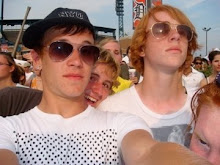
Richard Corben’s adaptation of H.P. Lovecraft’s works falls in a similar vein as some of our earlier readings, notably The Wolverton Bible and R. Crumb’s Genesis, in that the artist is not at all afraid of embracing the ugly and the grotesque in ways that are effective but not necessarily “cool.” Corben’s figures, especially his facial work, is distorted, plumped, bumpy – they look like the character actors you always see, but whose names you never remember. It also bears a strong resemblance, I feel, with the work of Howard Cruse, creator of the seminal Stuck Rubber Baby. All of these creators have a way of drawing completely “unrealistic” figures that feel incredibly real and human.
Corben’s style is also a strong fit for horror, in the most seventies sense of the word. His is not the relentlessly dark, stylized work of Jae Lee or Kent Williams, but the absurdly, almost humorous impossibilities of late EC comics, where grotesqueries and absurdities merge. Most of Corben’s designs look executable with the monster make-up technology of 1975, but work because of that same sense of consistency and suspension of disbelief.
 Where his Lovecraft stumbles is in the over-faithfulness of its translation. Lovecraft, for all of his cultural penetration, probably left more impact because of his content than because of his form. The overwrought, obsessive first-person style of his writing would likely turn off many of the legions of people who flock to his ideas. In choosing to stay so faithful to that style of writing, Corben discards some of the most basic benefits of comic book storytelling. There is no need to employ in a comic the large amount of “telling” that Lovecraft uses in prose; Corben carries most of this with his visual “acting.” Hesitation doesn’t need to be communicated with heavy narration when it can be read plainly on a character’s face. While it is faithful to the source material, it also hampers a smooth reading experience.
Where his Lovecraft stumbles is in the over-faithfulness of its translation. Lovecraft, for all of his cultural penetration, probably left more impact because of his content than because of his form. The overwrought, obsessive first-person style of his writing would likely turn off many of the legions of people who flock to his ideas. In choosing to stay so faithful to that style of writing, Corben discards some of the most basic benefits of comic book storytelling. There is no need to employ in a comic the large amount of “telling” that Lovecraft uses in prose; Corben carries most of this with his visual “acting.” Hesitation doesn’t need to be communicated with heavy narration when it can be read plainly on a character’s face. While it is faithful to the source material, it also hampers a smooth reading experience. Similarly, there is an unavoidable problem in attempting to show the “unshowable.” Lovecraft’s horror often comes in the form of indescribable terrors, not fit to exist within our realm of the senses. By choosing, in most cases, to realize these horrors on the page rather than play with withholding visuals, Corben will inevitably disappoint some readers. However, like Lovecraft himself, Corben is an influential creator whose style can be felt in many places, even if his own output is hit-or-miss with many readers.


No comments:
Post a Comment